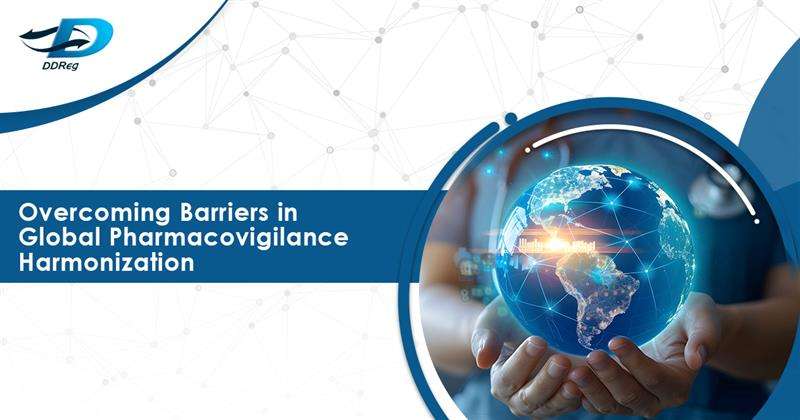
Pharmacovigilance (PV) is defined by the World Health Organization (WHO) as “the science and activities relating to the detection, assessment, understanding, and prevention of adverse effects or any other drug-related problem”. Global Pharmacovigilance Harmonization, on the other hand, refers to the process of aligning regulations, practices, and standards across countries and regions in order to facilitate global collaboration and the cross-border exchange of information. However, achieving this goal is challenging due to the diversity of regulatory environments and scientific advancements.
Identifying Roadblocks to Pharmacovigilance Harmonization
Achieving global harmonization in PV is crucial for reliable drug safety monitoring. However, this process is hindered by several barriers, including inconsistent regulatory requirements and cultural differences that influence how PV activities are implemented.
- Differing Regulatory Requirements
Every country has their own set of guidelines for PV reporting and compliance. For example:
- The European Union relies on EudraVigilance for adverse event reporting.
- The United States uses the FDA Adverse Event Reporting System (FAERS).
- India has its Pharmacovigilance Programme under the Central Drugs Standard Control Organization (CDSCO).
These differences make it challenging to establish a unified global system. Regulatory agencies often emphasize local concerns over global collaboration, leading to fragmented approaches.
- Variability in ADR Reporting
Each country employs unique definitions, formats, and systems for reporting adverse drug reactions. This inconsistency hampers the global comparison and analysis of safety data, which is essential for identifying cross-border safety signals.
- Variations in Defining Adverse Events
Differences in definitions and classifications of adverse events—evident in comparative analyses of pharmacovigilance regulations in the US, UK, Canada, and India—can lead to underreporting or overreporting, further complicating global harmonization.
Efforts & Strategies to Overcome Roadblocks
While global pharmacovigilance harmonization poses substantial challenges, technological advancements offer potential solutions. Through the strategic implementation of cutting-edge technologies, pharma companies can use them to bridge the gaps that exist and develop more efficient and effective pharmacovigilance systems.
- Global Regulatory Frameworks
The International Council for Harmonisation (ICH) and the World Health Organization (WHO) are working collaboratively towards globally accepted standards and initiatives for pharmacovigilance. ICH produces harmonized reporting guidelines for adverse events and individual case safety reports in an effort to establish uniform standards, while WHO’s VigiBase facilitates global collaboration in pharmacovigilance by enabling regulatory authorities to share and analyze safety data more easily. Harmonization efforts seek to develop common standards to streamline drug safety monitoring worldwide.
- Leveraging Technology and Innovation
Artificial Intelligence (AI), machine Learning, and Natural Language Processing technologies are rapidly shifting the paradigm in pharmacovigilance from reactive to proactive practices by quickly and accurately processing vast amounts of data to identify potential safety signals more quickly than conventional methods.
AI can help detect discrepancies in safety labeling across regions, expediting the identification of inconsistencies. Moreover, AI-powered analytics provide deep insights into the root causes of these mismatches, supporting alignment efforts.
Collaboration is integral for improving global pharmacovigilance. Establishing international forums, expanding training programs, and engaging the public are all necessary to effectively assess drug safety. Organizations such as WHO, ICH, and EMA are essential in creating cross-country collaborations for harmonizing standards and methodologies across borders. By investing in global training initiatives for healthcare professionals worldwide, countries can improve adverse drug reaction reporting rates while increasing data quality. Engaging the public through educational campaigns can encourage active participation in pharmacovigilance. Collaboration offers several advantages, including improved signal detection, patient safety enhancements, resource optimization, and cost reductions. Furthermore, these efforts not only increase data quality and reporting rates but also strengthen patient safety worldwide.
Conclusion
Harmonizing global pharmacovigilance is a complex but essential pursuit for safeguarding patient health worldwide. The path forward lies in leveraging advanced technologies, fortifying national PV systems, and fostering robust international collaboration. With a strategic and unified approach, the vision of a globally harmonized PV system can become a tangible reality.
At DDReg, we provide pharmacovigilance services through a multifaceted approach that ensures the safety and efficacy of pharmaceutical products throughout their lifecycle. For professional advice and assistance in pharmacovigilance-related queries, get in touch with us at https://www.ddregpharma.com/contact-us. Read more from our global PV experts here: Harnessing AI for Enhanced Literature Monitoring in Pharmacovigilance
